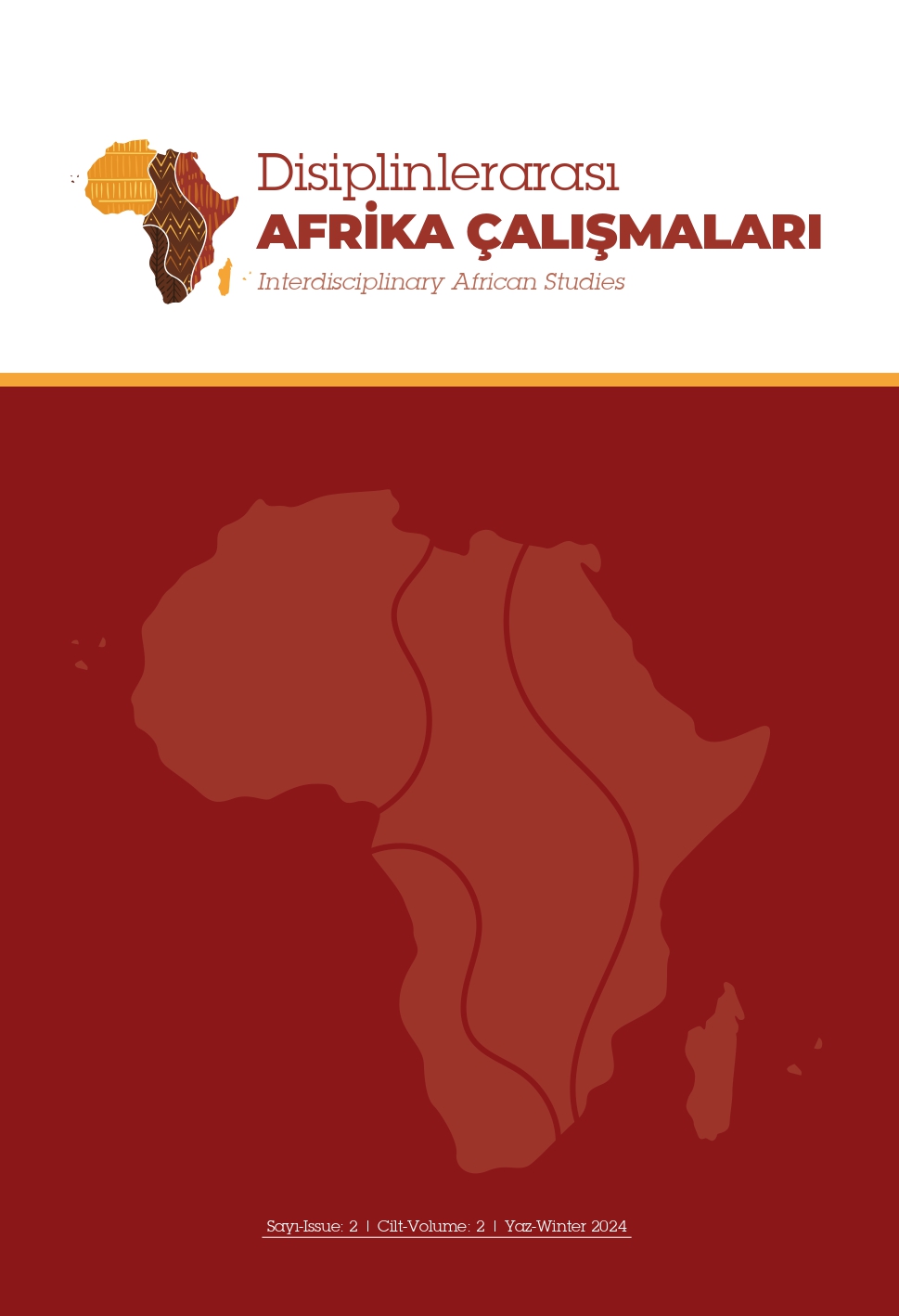MALI IN OTTOMAN DOCUMENTS DURING THE REIGN OF SULTAN ABDULHAMID II
DOI:
https://doi.org/10.5281/zenodo.14577626Keywords:
Bilad al-Sudan, France, Mali, Ottoman Empire, TimbuktuAbstract
The colonization of Africa by European states in the second half of the 19th century is considered an important issue followed by Sultan Abdulhamid II. Abdulhamid II strengthened ties with local administrators to improve relations with the Muslim population in Africa and ensured the preparation of reports, information notes and maps about region. Based on this, the aim of this research is to discover the Ottoman influence in Africa and the impact of the activities carried out during the reign of Abdulhamid II. In this context, activities affecting the region by surveying Ottoman archives and other period sources were analyzed and translation and interpretation were conducted. The issue of the hinterland of Tripoli as an Ottoman territory is also a reason for the Ottoman Empire's attention to this region. It is known that the activities of the French in West Africa were followed, and intelligence information were provided by local sources. The area that is currently inside the borders of the Republic of Mali was searched through archives in this regard. Thirteen documents, spanning the years 1882–1894, were found such as information notes, notification letters from French and Arabic newspapers. Documents describe the advance of the French from the West African coast to Biladüssudan, the construction of the railway between Senegal and Mali, and Sultan II. Additionally, the unsigned and encrypted Arabic letter sent to the Special Administrative Agency of Tripoli states that the French captured Timbuktu, the important civilization center of Africa. This letter and the correspondence between the Tripoli Province, the Ministry of Internal Affairs and the Sublime Porte were also included in the study. As a result, it was revealed that the Ottoman Empire followed the French initiatives and activities in West Africa and at the same time, the influence and prestige of the Ottoman Empire are seen through the research permission given to the Germans.
References
Çetin, A. (1993). el-Cevâib. Türkiye Diyanet Vakfı İslâm ansiklopedisi (7. cilt) (ss. 435-436). İstanbul: Türkiye Diyanet Vakfı.
Hantzsch, V. (1900). Zeuner, Karl Ludwig. Allgemeine Deutsche biographie (45. cilt) (ss. 129-131). Leipzig: Verlag von Duncker-Humblot.
Karasar, N. (2005). Bilimsel araştırma yöntemi. Nobel Yayın Dağıtım.
Kavas, A. (2003). Mali. Türkiye Diyanet Vakfı İslâm ansiklopedisi (27. cilt) (ss. 493-504)
Patton, M. Q. (2002). Qualitative research and evaluation methods. SAGE Publishing.
Tandoğan, M. (2011). Osmanlı Devleti’nin Afrika’da Avrupa Sömürgeciliğine Karşı Siyaseti (XIX. Yüzyıl ve XX. Yüzyılın Başları) (Yayınlanmamış yüksek lisans tezi). İstanbul Üniversitesi, İstanbul.
Tandoğan, M. (2015). Afrika’nın Kuzeyini Güneyinden Ayıran Toplum Tevârikler ve Stratejik Konumları: Osmanlı-Tevârik Münasebetleri (Yayımlanmamış doktora tezi). İstanbul Üniversitesi, İstanbul.
Downloads
Published
How to Cite
Issue
Section
License
Copyright (c) 2024 Interdisciplinary African Studies

This work is licensed under a Creative Commons Attribution 4.0 International License.






